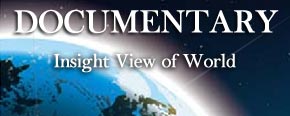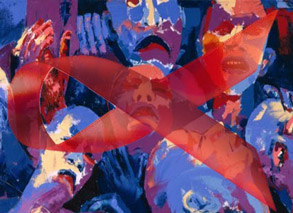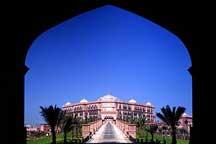 Apr. 9, 2025
Apr. 9, 2025
Weather
Western movies build "grand and perfect" image of Dalai Lama
2009-08-01 17:15 BJT
(Source: People's Daily)
BEIJING, July 15 -- Western movie makers have always been enthusiastic about Tibetan Buddhism and the Dalai Lama. Recently, another Western movie documenting the Dalai Lama's life story and thoughts has been shown in a number of countries, including the U.S.
The documentary film entitled "Dalai Lama Renaissance" documents 40 social elites from various places around the world making a journey to Dharamsala, India to talk with the Dalai Lama about issues surrounding human development and the future. The movie transforms the Dalai Lama into an omniscient sage, reflecting a "misunderstanding" of the Dalai Lama's image in the West.
U.S. director claims to be a follower of the Dalai Lama
This film mainly consists of two parts. The key storyline documents a visiting group of 40 people including astrophysicists, quantum physicists, philosophers and social activists making an arduous journey to Dharamsala which is home to the "Tibetan government in-exile" in order to have a "world summit" with the Dalai Lama at the end of 1999. The 14th Dalai Lama's life story was depicted in between the main episodes of the film.
Although this is a documentary film, it is not entirely objective. The director's personal viewpoint could clearly be seen in the film. Portrayed as an "omniscient sage" in the film, the Dalai Lama was able to "profoundly" decipher human nature, and analyze the fate of humanity through his wisdom.
However, the director Khashyar Darvich has long boasted that he is a follower of the Dalai Lama. He once said in an interview with U.S. media, that the main reason he shot this film was to have more opportunities to come into contact with the Dalai Lama.
Building a "grand and perfect" image of the Dalai Lama is a common stereotype in Western movies
In recent years, a wave of "Dalai Lama fever" has appeared in the Western movie industry. These movies all placed the Dalai Lama in a supreme position, making him a kind but helpless weakling, as well as a highly authoritative spiritual leader. Creating a "grand and perfect" image of the Dalai Lama is a common stereotype in Western "Dalai Lama movies."
While these movies seem to have no political bent, the biased lens of the camera covers up the politics reflected in the movie, describing the Chinese government's peaceful liberation of Tibet as "cruel oppression," and depicting the Dalai Lama's life in India as difficult. Some movies even advocate the Dalai Lama's concept of "independence."
The part of the movie related to the peaceful liberation of Tibet was filled with political bias, reflecting the director‘s ignorance and misunderstanding of Tibet's history.
The Dalai Lama is adept in "hypnotizing" the West
The Western movies' zeal for the Dalai Lama derives from the West's unique "Shangri-La complex." Tibet's beauty and Tibetan Buddhism's mysteries are things that numerous Westerners yearn for. As one of the spiritual leaders of Tibetan Buddhism, the Dalai Lama has been bestowed with untouchable sanctity by the West. Movies with such storylines have catered to the Western audience's taste for novelty, resonating with their cultural inclinations, so as to gain high box office returns.
In fact, what these movies depict is just the "anesthesia" given by the Dalai Lama to the West. Western people only see the religiousness of the Dalai Lama, and have little understanding of his political aspirations, resulting in movies that are not objective.
Editor: 卢佳颖 | Source:
 Mail
Mail Share
Share Print
Print


 Video
Video









 2009 China Central Television. All Rights Reserved
2009 China Central Television. All Rights Reserved